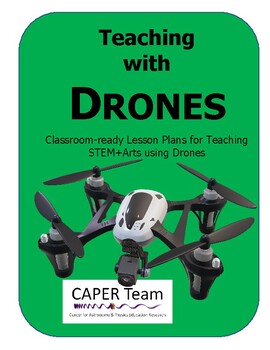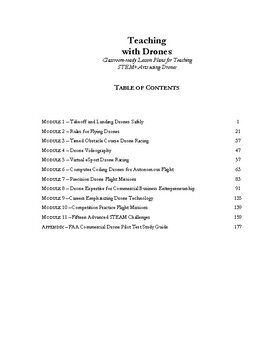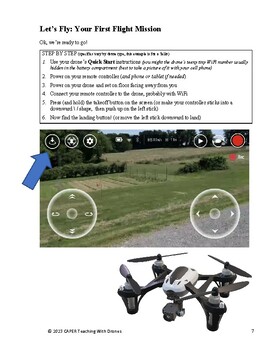Let's Fly Drones: An 8-Module Comprehensive iDRONE Learning Curriculum
Lets Fly Drones Curriculum Lesson Plan Store
27 Followers
Grade Levels
3rd - 11th, Homeschool
Resource Type
Standards
CCSSMP1
NGSS3-5-ETS1-1
Formats Included
- PDF
Pages
200 pages
Lets Fly Drones Curriculum Lesson Plan Store
27 Followers
Description
Let’s Fly Drones! Educators are often looking for innovative ways to better teach interdisciplinary STEM and creative arts—or STEAM—concepts. This comprehensive, ready-to-go drone teaching lesson plan kit provides flight mission tasks for beginning pilots to learn and practice the skills they need to use their drones to support learning core concepts. Topics include safe & legal flight; flight controls; physics of flight; aviation weather, flight operations, drone racing, precision flight, computer coding for autonomous flight, and videography. This complete package is carefully designed to be used by teachers who have no or limited experience flying drones themselves.
Total Pages
200 pages
Answer Key
N/A
Teaching Duration
1 Semester
Report this resource to TPT
Reported resources will be reviewed by our team. Report this resource to let us know if this resource violates TPT’s content guidelines.
Standards
to see state-specific standards (only available in the US).
CCSSMP1
Make sense of problems and persevere in solving them. Mathematically proficient students start by explaining to themselves the meaning of a problem and looking for entry points to its solution. They analyze givens, constraints, relationships, and goals. They make conjectures about the form and meaning of the solution and plan a solution pathway rather than simply jumping into a solution attempt. They consider analogous problems, and try special cases and simpler forms of the original problem in order to gain insight into its solution. They monitor and evaluate their progress and change course if necessary. Older students might, depending on the context of the problem, transform algebraic expressions or change the viewing window on their graphing calculator to get the information they need. Mathematically proficient students can explain correspondences between equations, verbal descriptions, tables, and graphs or draw diagrams of important features and relationships, graph data, and search for regularity or trends. Younger students might rely on using concrete objects or pictures to help conceptualize and solve a problem. Mathematically proficient students check their answers to problems using a different method, and they continually ask themselves, "Does this make sense?" They can understand the approaches of others to solving complex problems and identify correspondences between different approaches.
NGSS3-5-ETS1-1
Define a simple design problem reflecting a need or a want that includes specified criteria for success and constraints on materials, time, or cost.





